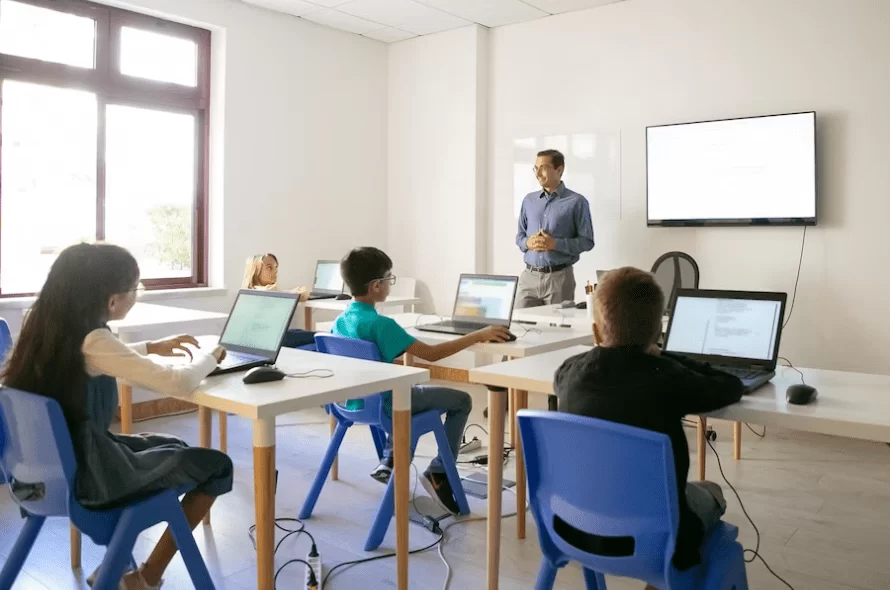In today’s rapidly evolving world, technology has become a cornerstone of almost every aspect of our lives—including education. From virtual classrooms to AI-driven learning tools, modern education is undergoing a digital revolution. As both a student and a lifelong learner, I’ve witnessed firsthand how technology is reshaping how we access, engage with, and apply knowledge.
A Shift from Traditional to Tech-Driven Learning
Gone are the days when learning was confined to chalkboards, textbooks, and four walls. Today, students can attend virtual classes from anywhere in the world, access massive online open courses (MOOCs), and collaborate with peers across continents in real time. The traditional classroom is evolving into a blended learning environment, where face-to-face interaction is enhanced—not replaced—by digital tools.
Learning management systems (LMS) like Google Classroom, Moodle, and Canvas have made it easier for teachers to organize lessons, grade assignments, and communicate with students efficiently. Meanwhile, educational platforms like Khan Academy, Coursera, and edX offer self-paced learning on topics ranging from basic math to advanced neuroscience.
Personalized Learning Through Technology
One of the most significant contributions of technology in education is personalization. Not every student learns the same way or at the same pace. Technology enables adaptive learning systems that tailor educational content to the individual needs of each student. Tools like Duolingo or DreamBox Learning adjust difficulty levels based on the user’s performance, providing a customized learning experience that keeps students engaged and motivated.
Artificial intelligence (AI) is also playing a growing role in identifying knowledge gaps. Intelligent tutoring systems can analyze a student’s responses and guide them with targeted feedback, improving comprehension and retention.
Expanding Access to Education
Technology has democratized education in many ways. Students in remote or underserved areas can now access quality learning resources via the internet. Online degrees and certifications make it possible for working professionals and parents to continue their education without disrupting their daily routines.
During the COVID-19 pandemic, remote learning became a necessity rather than a choice. Though it came with challenges, it also accelerated the adoption of digital tools that continue to benefit education today. Virtual labs, simulation software, and video conferencing tools like Zoom and Microsoft Teams have enabled students and teachers to stay connected regardless of physical distance.
Enhancing Engagement and Collaboration
Interactive media such as videos, gamified quizzes, and virtual reality (VR) experiences have made learning more engaging than ever. Students can take virtual field trips to historical landmarks or dissect a virtual frog in a biology class. This level of interactivity fosters curiosity and deeper learning.
Collaboration tools like Padlet, Slack, or Google Docs enable students to work on group projects in real time, whether they’re sitting in the same room or thousands of miles apart. These tools not only support academic learning but also help develop essential 21st-century skills like communication, teamwork, and problem-solving.
Challenges and Considerations
While technology offers many advantages, it also presents new challenges. The digital divide—the gap between those who have access to technology and those who don’t—remains a significant barrier to equity in education. Students without reliable internet or devices can easily fall behind.
There’s also the issue of screen fatigue and decreased social interaction. Excessive screen time can affect attention spans, sleep patterns, and even mental health. Educators must balance the use of digital tools with offline activities that promote critical thinking and personal connection.
Data privacy is another concern. As more educational platforms collect student information, schools must ensure that this data is protected and used responsibly.
The Future of Education: A Tech-Integrated Vision
Looking ahead, technology will continue to shape the future of education in ways we can’t yet fully predict. Innovations like augmented reality (AR), blockchain credentials, and AI-powered grading systems are already on the horizon. But it’s important to remember that technology is a tool, not a substitute for quality teaching.
The role of educators remains vital. Teachers guide, inspire, and adapt technology to the unique needs of their students. When used thoughtfully, technology amplifies their impact rather than replacing it.
Conclusion
The role of technology in modern education is both transformative and empowering. It opens doors to new possibilities, breaks down barriers to learning, and enhances the educational experience for students and teachers alike. As we continue to integrate these tools into our classrooms and curriculums, the focus should remain on creating meaningful, inclusive, and human-centered learning environments.






